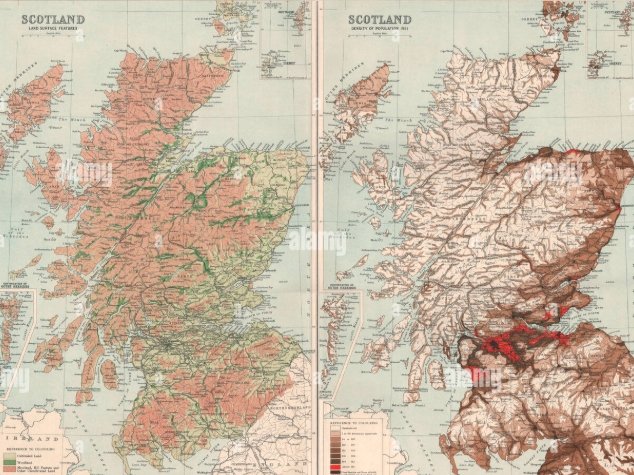Scotland’s Land Register is expanding quickly, with new fee hikes making voluntary registration a smart move for property owners. As of August 2025, changes to plans report fees have increased costs, pushing many to act now before more rises hit.
This shift comes from the Land Registration (Scotland) Act of 1979, which aims to replace the old Sasine Register with a modern, map-based system. Property owners in Scotland face higher charges for key services, but voluntary registration offers clear benefits like better boundary clarity and stronger legal protection.
Understanding the Land Register Shift
The Land Register of Scotland is modernizing property records across the country. It moves away from ancient paper deeds to digital maps based on Ordnance Survey data.
This change started with the 1979 Act and targets full completion soon, though it missed the 2024 goal. Now, with the register filling up, more titles get added daily through sales or voluntary steps.
Voluntary registration lets owners add their property without a sale. It speeds up the process and avoids future headaches. Recent updates show the register covers more land each year, with over 70 percent of titles now mapped in some areas.
Experts note this system reduces disputes by providing exact boundaries. For instance, a landowner in rural Scotland recently fixed a garden overlap issue after registering early.

Key Fee Changes in 2025
Fees for plans reports jumped in August 2025, affecting anyone dealing with property titles. These reports check issues before registration to cut rejection risks.
The basic Level 1 fee rose from 65 pounds to 110 pounds plus VAT. The standard Level 3 fee went up from 95 pounds to 160 pounds plus VAT. Level 2 reports got removed entirely.
Processing times now aim for three working days, but a same-day fast-track option is delayed until later this year. These hikes add pressure on sellers, buyers, and lenders who rely on quick, affordable checks.
Here’s a quick table showing the main fee updates:
| Service Level | Old Fee (plus VAT) | New Fee (plus VAT) | Change |
|---|---|---|---|
| Level 1 | 65 pounds | 110 pounds | +69% |
| Level 3 | 95 pounds | 160 pounds | +68% |
| Level 2 | 95 pounds | Removed | N/A |
These changes reflect rising operational costs at Registers of Scotland. Property pros warn that waiting could mean even higher fees if trends continue into 2026.
One recent event tied to this is the Scottish government’s push for full registration by 2025’s end, linking it to broader housing reforms. This ties into national efforts to streamline land use amid growing development needs.
Benefits of Voluntary Registration
Voluntary registration brings real advantages for property owners. It creates a clear, digital record that protects rights and simplifies deals.
First, it offers certainty on boundaries. No more vague old deeds leading to neighbor fights. The map-based setup shows exact limits, backed by state assurance.
It also shields against challenges. Once registered, titles are hard to dispute, raising the bar for any claims. This is key for leased properties, where tenants might register first and cause mix-ups.
Future sales get easier too. All info sits in one spot, speeding up transactions and cutting legal fees. For large land holders, it highlights rights like access or water, which can build over time through use.
- Clarity on Ownership: Pinpoint boundaries reduce disputes.
- Legal Protection: State-backed title assurance deters challenges.
- Simplified Sales: Grouped info cuts time and costs for deals.
- Estate Planning Aid: Helps manage portfolios and spot issues early.
Recent cases show registered owners avoiding costly corrections. For example, a farm in the Highlands used registration to secure utility rights before a developer bid.
This move aligns with trends like rising property values in Scotland, up 5 percent in 2025 per latest market reports. It also supports green energy projects needing clear land titles.
Who Should Consider Registering Now?
Homeowners with older titles stand to gain most from acting soon. If your property is still on the Sasine Register, voluntary steps can prevent surprises.
Landlords with multiple units benefit too. It aids stock management and flags potential problems early. Rural estate owners find it useful for dealing with developers or planning sales.
Even urban flat owners see value in clearer boundaries amid dense building. With fees rising, registering now locks in current rates and avoids future hikes.
Portfolio holders, like housing associations, use it for better oversight. A recent survey found 40 percent of Scottish landowners plan to register voluntarily this year due to fee concerns.
This ties into wider 2025 events, such as housing policy updates under new leadership, emphasizing efficient land use.
Steps to Start Voluntary Registration
Getting started is straightforward but needs expert input. First, check your title status with Registers of Scotland.
Gather deeds and maps, then submit an application. Fees vary by property value, but discounts apply for voluntary cases until targets are met.
Seek advice from surveyors or lawyers to avoid pitfalls. They can handle plans reports and ensure smooth approval.
Processing takes weeks, but it’s faster than waiting for a forced trigger like a sale. With the register’s push, early action beats delays.
Recent incentives include a 25 percent fee cut for voluntary registrations, extended into 2025 to boost uptake.
What do you think about these changes? Share your thoughts in the comments and pass this article to friends facing property decisions. Your input could help others navigate this shift.


















